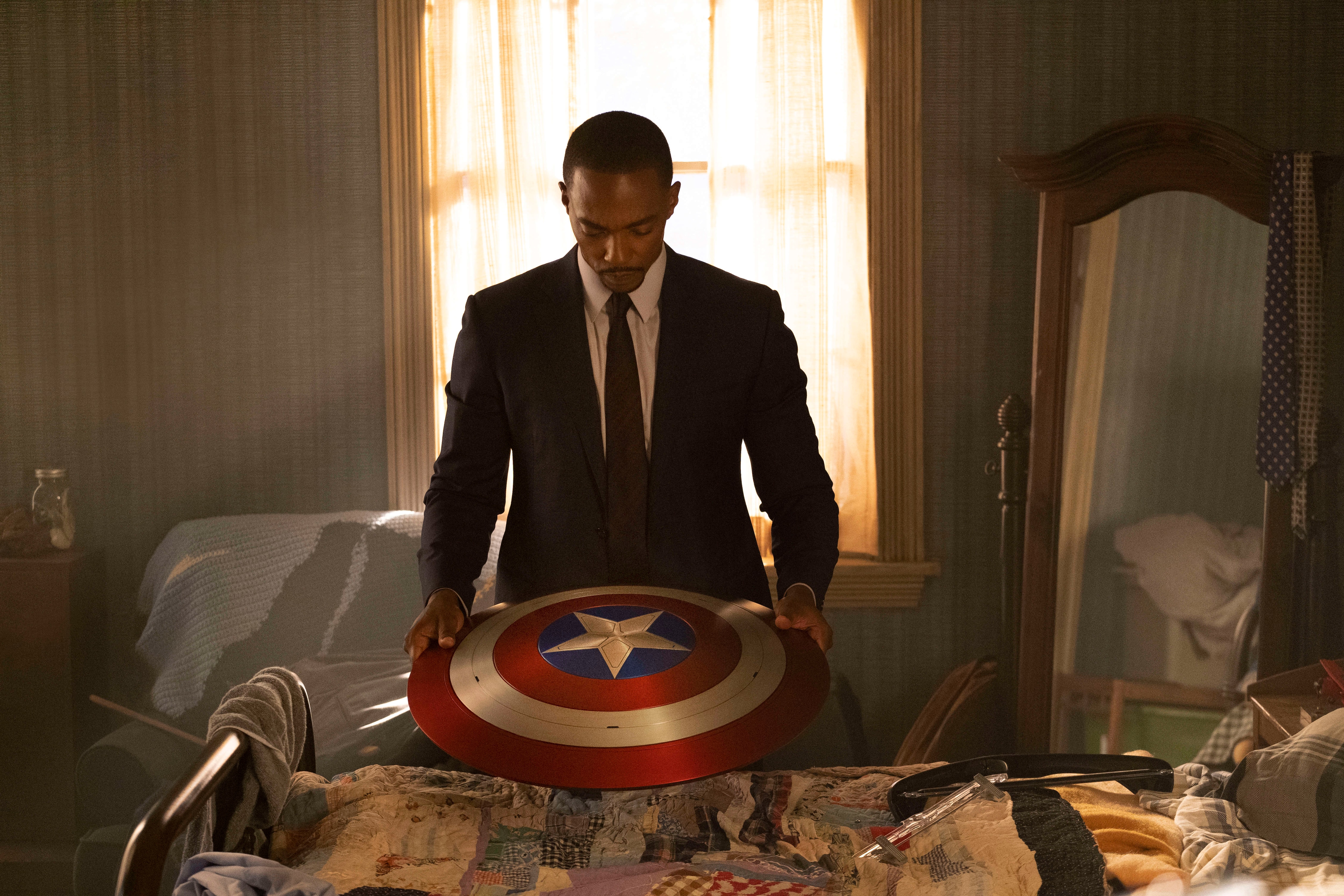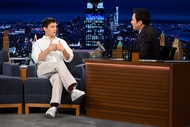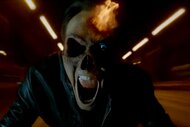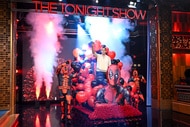Create a free profile to get unlimited access to exclusive videos, sweepstakes, and more!
How The Falcon and the Winter Soldier captures what made Sam Wilson's Captain America comics so great

Marvel's second Disney+ series wasn't perfect, but it was necessary — and a look back at Sam Wilson's comic book tenure with the stars and stripes makes it clear why the Falcon's transition into Captain America needed the narrative space to breathe.
When an elderly Steve Rogers (Chris Evans) passed the shield to Sam Wilson (Anthony Mackie) in the closing moments of Avengers: Endgame, most fans assumed we'd be jumping right into the new era with Sam taking up the mantle of Captain America — a changeover that first happened in the comics about seven years ago and ran for a few years in the pages of All-New Captain America and Captain America: Sam Wilson.
Instead, we got The Falcon and the Winter Soldier, an in-between, six-episode chapter that captured some of the vibes of Captain America: The Winter Soldier and Captain America: Civil War, just with some smaller stakes and a new Captain America (though obviously not the ones fans would've expected from the end of Endgame).
Sam first took up the role of Captain America as part of Marvel's big "All New" relaunch event, which saw several different characters take on classic roles across the company's line. That first arc from writer Rick Remender and artist Stuart Immonen let Sam put his own spin on a classic Captain America baddie HYDRA while stopping the evil organization's latest world domination plot. It established quickly that Sam could handle the big, comic book-y craziness just as well as Steve.
However, it was the follow-up series Captain America: Sam Wilson from writer Nick Spencer that really started to peel back the layers of what could make Sam's version of this character different from Steve Rogers and Bucky Barnes, who had carried the shield himself a few years earlier. Spencer's series often found itself focused on more community-level narratives, with Sam's Cap stepping into stories about police brutality and immigration in-between the more traditional superhero fare. In the comics, Joaquín Torres (reimagined as a handler and soldier played by Danny Ramirez in The Falcon and the Winter Soldier) was actually an immigrant who takes up the wings as the new Falcon and becomes Sam's sidekick.
It seems clear The Falcon and the Winter Soldier drew a fair amount of inspiration from the spirit and themes of Spencer's run, though it was interpreted through the MCU lens of a post-Blip world dealing with its own power dynamics and immigration issues. The comic run also didn't shy away from exploring how the nation might react to a Black man taking up the role of Captain America, an idea that was at the heart of why Sam first decides to retire the shield in the first place in the live-action series. We see that first hand in The Falcon and the Winter Soldier when the powers that be literally hand the shield over to the first Steve Rogers-looking knockoff they could find in John Walker (Wyatt Russell).
Of course, it takes more than looking the part to be Captain America, as the whole world learned on the bloody, psychologically broken end of the shield by the show's midpoint. It's the measure of a man, not what's on the outside, that determines his worthiness to carry the shield. It's also not about super serum, which is something Sam makes clear. It's about embodying the ideals of what the country, and this world, should be — even when not everyone agrees, and often because not everyone agrees. It's not quite as heavy-handed as Mjǫlnir's inscription, but the point is clear.
Not just anyone can be Captain America, and Sam knows that — and knows that challenge will only be compounded by the color of his skin.
Spencer's comic run lived in the conflicted, messy margins of not having a blonde-haired, blue-eyed white man wearing the stars and stripes, a story The Falcon and the Winter Soldier did an excellent job of exploring by finally introducing Isaiah Bradley, an early Black super soldier from the Marvel Comics canon, into the MCU to show that this story of race hasn't escaped the shiny, quip-filled world of the MCU. It was just unseen, much like Bradley himself had been hidden from history until now. That comic run also played out a story we only got to see the opening stanza of in The Falcon and the Winter Soldier's closing moments: The pushback to Sam finally suiting up as Captain America.
The comic story fleshed out a full-on campaign from people calling for Sam to give back the shield, blasting him for having the audacity to carry it and the weight of what it represents into issues such as immigration and police reform. Sam hints at that looming pressure in the closing moments of The Falcon and the Winter Soldier's finale, and considering that he stood with the refugees against the world's governments on live TV, it will almost certainly continue to be relevant the next time we see Sam.
Though the pacing and execution of The Falcon and the Winter Soldier might've been a bit uneven, it told a story in Sam that needed to be told — and it was a story that would've been a much harder fit to condense into a two-hour movie (considering it seemed hard enough to tell it over a six-episode TV series). Sam Wilson's version of Captain America is going to be unlike anything we or the MCU have seen, and it's only right we get to see him grow into that decision and that role naturally.
It's no coincidence his first official act after taking up the shield is to go on live TV and stand up for the “terrorists” he'd just taken down. The world is a complicated place — both the MCU and our own — and Sam's Captain America is uniquely qualified to be the hero both need right now. That said, he probably won't be the hero everyone wants to see — and that goes for the world of the MCU, as well as our very own, too — but there are some truly great storytelling opportunities that only work with Sam in the suit.
With word that Marvel is already in the early stages of developing a fourth Captain America movie with Sam in the title role, it's great to know we'll get to see the shield — and Sam — back on the big screen, too. The Falcon and the Winter Soldier gave this new Captain America the runway to launch and owes equal credit to the comic stories of the past decade for carving out the path.
Now we just need to see Cap-Wolf. On the big screen. Please, Marvel?
The views and opinions expressed in this article are the author's, and do not necessarily reflect those of SYFY WIRE, SYFY, or NBCUniversal.





























